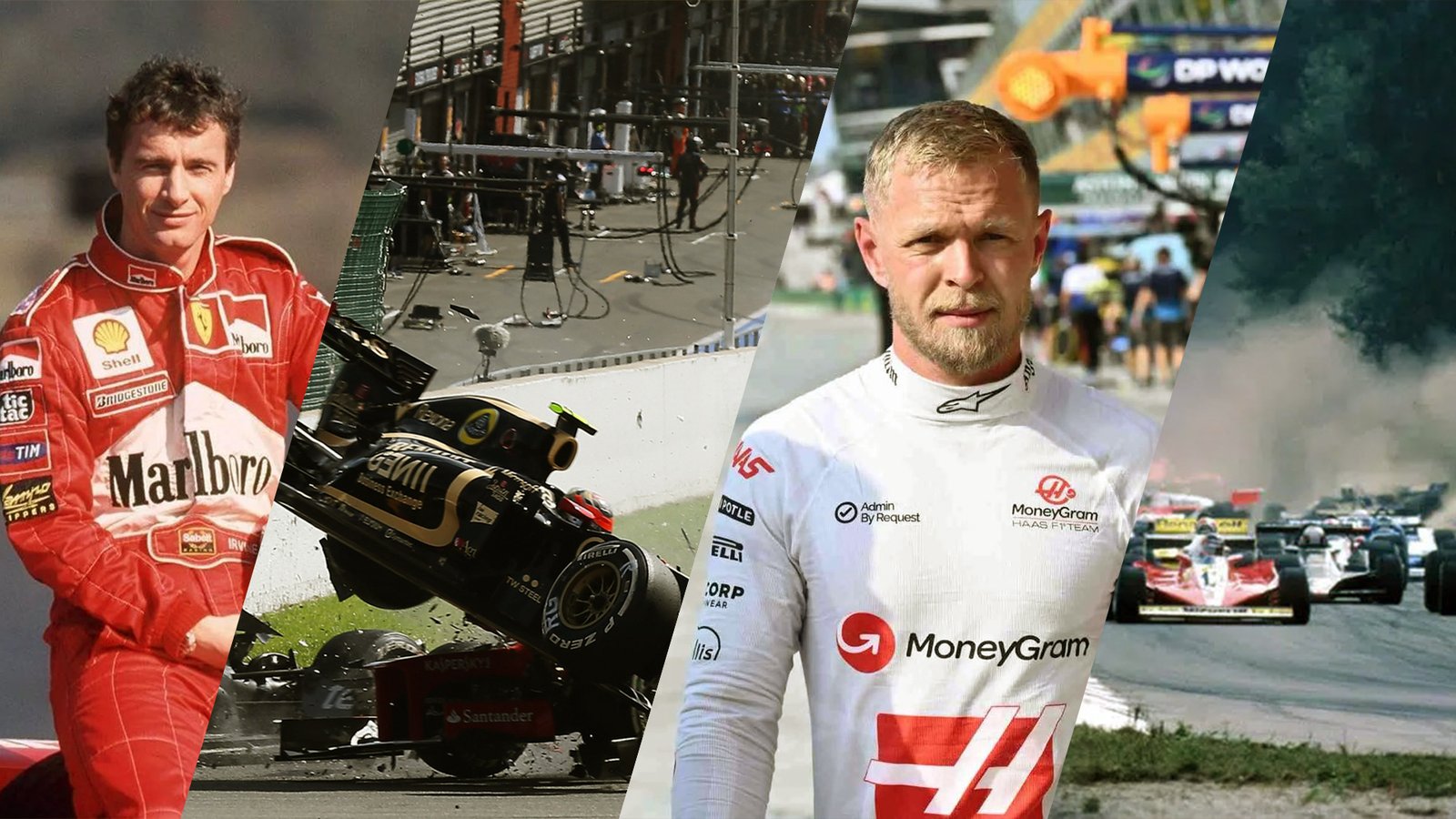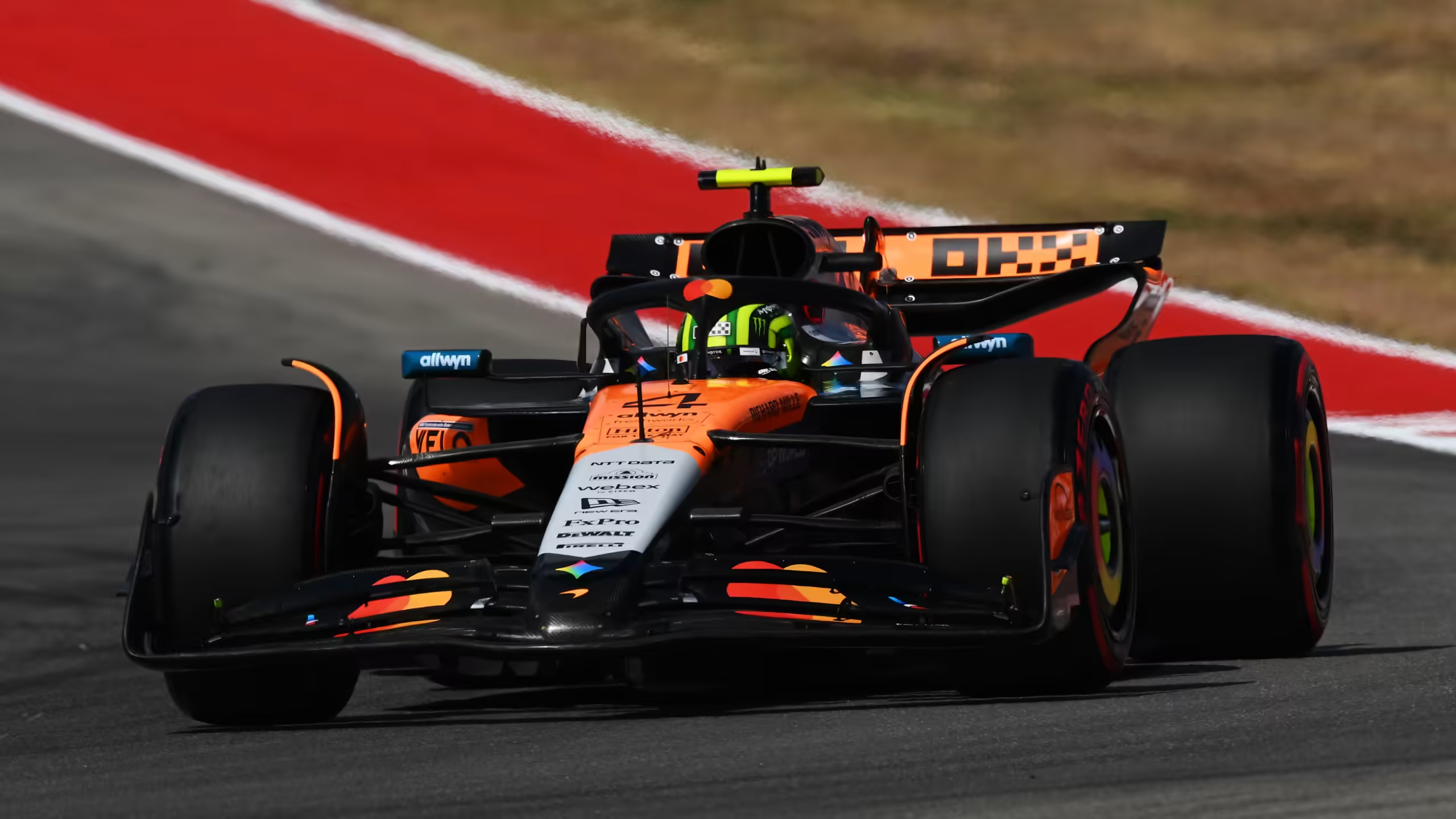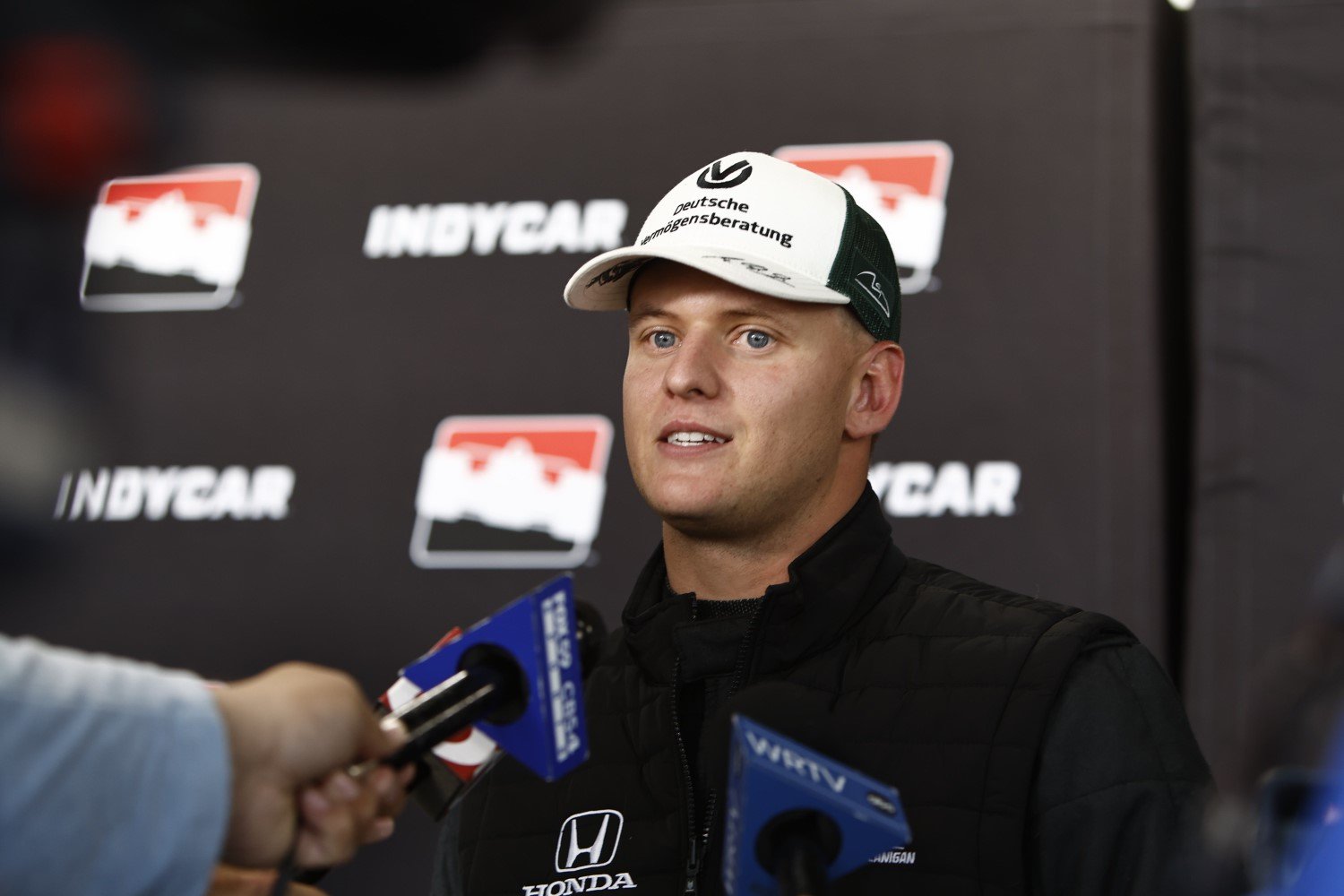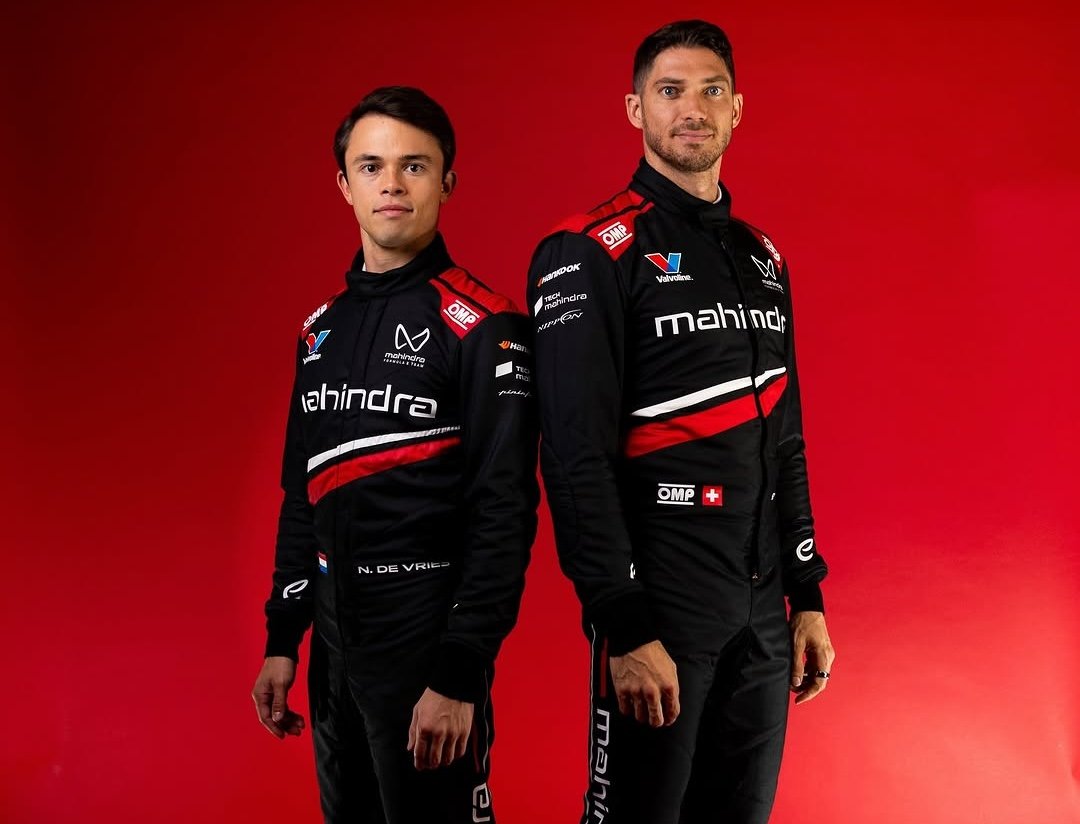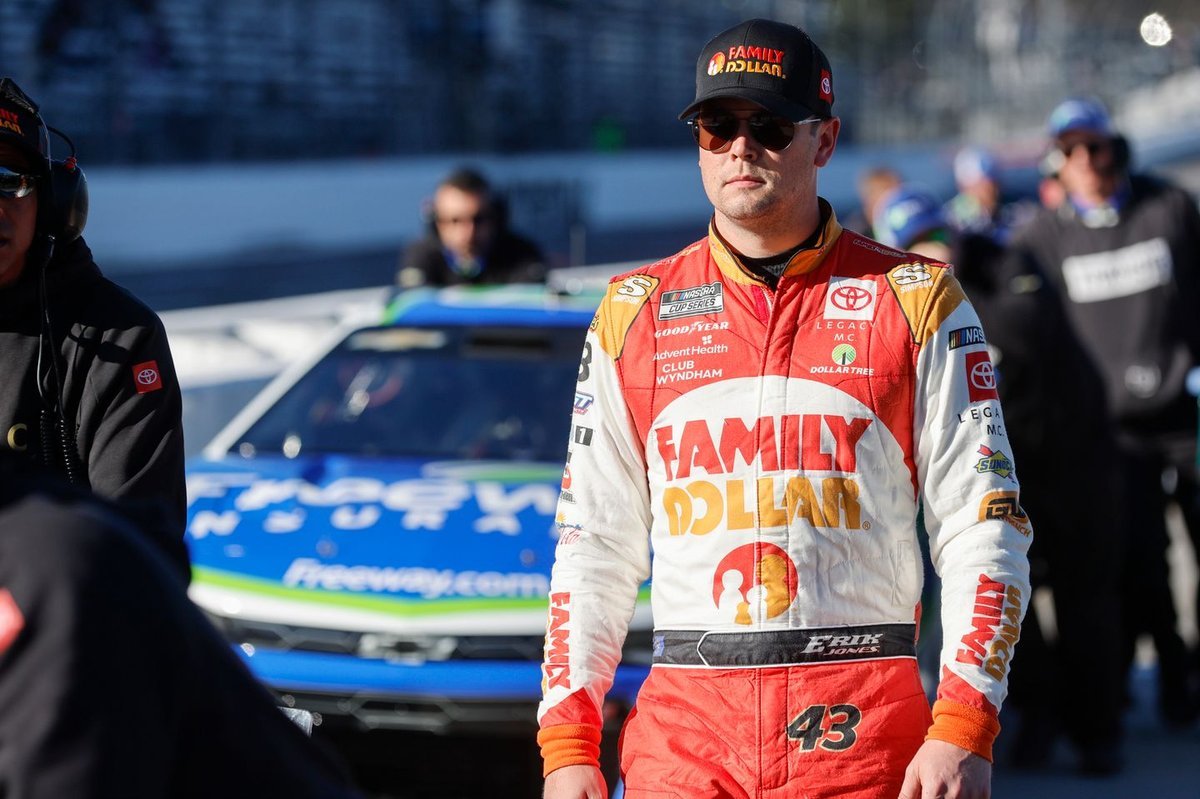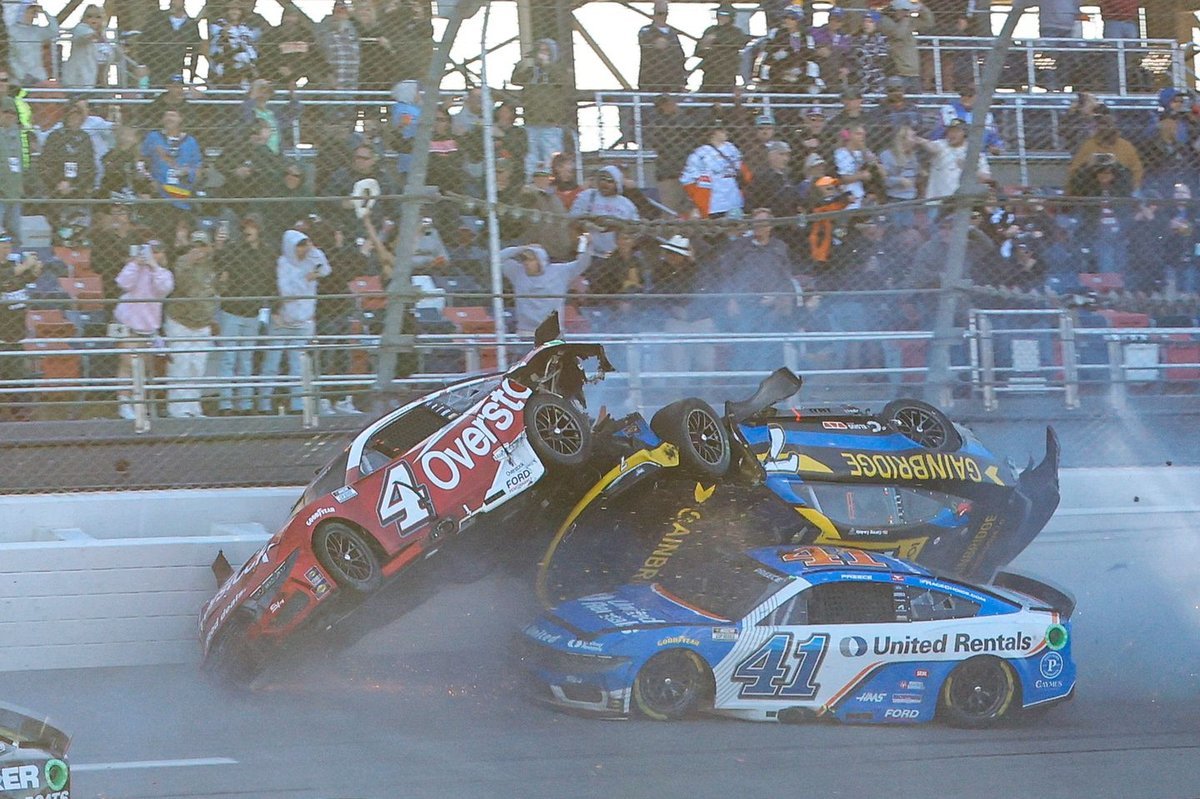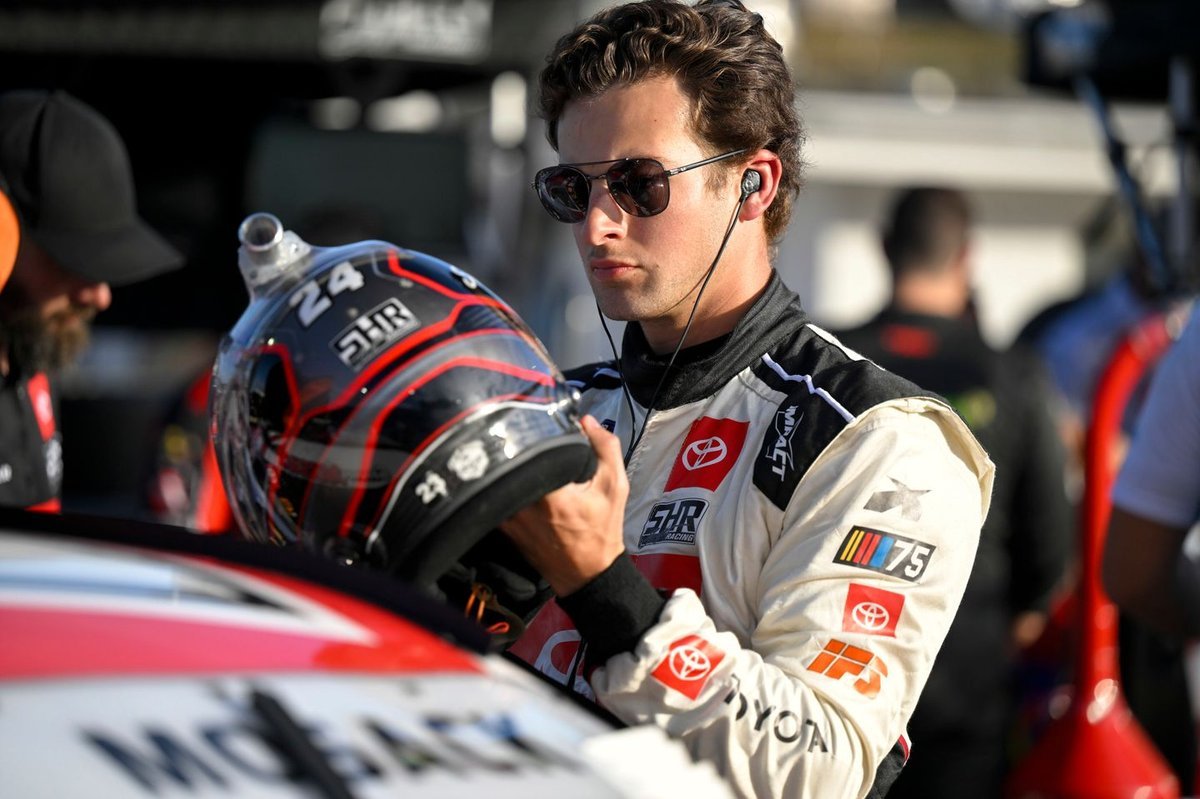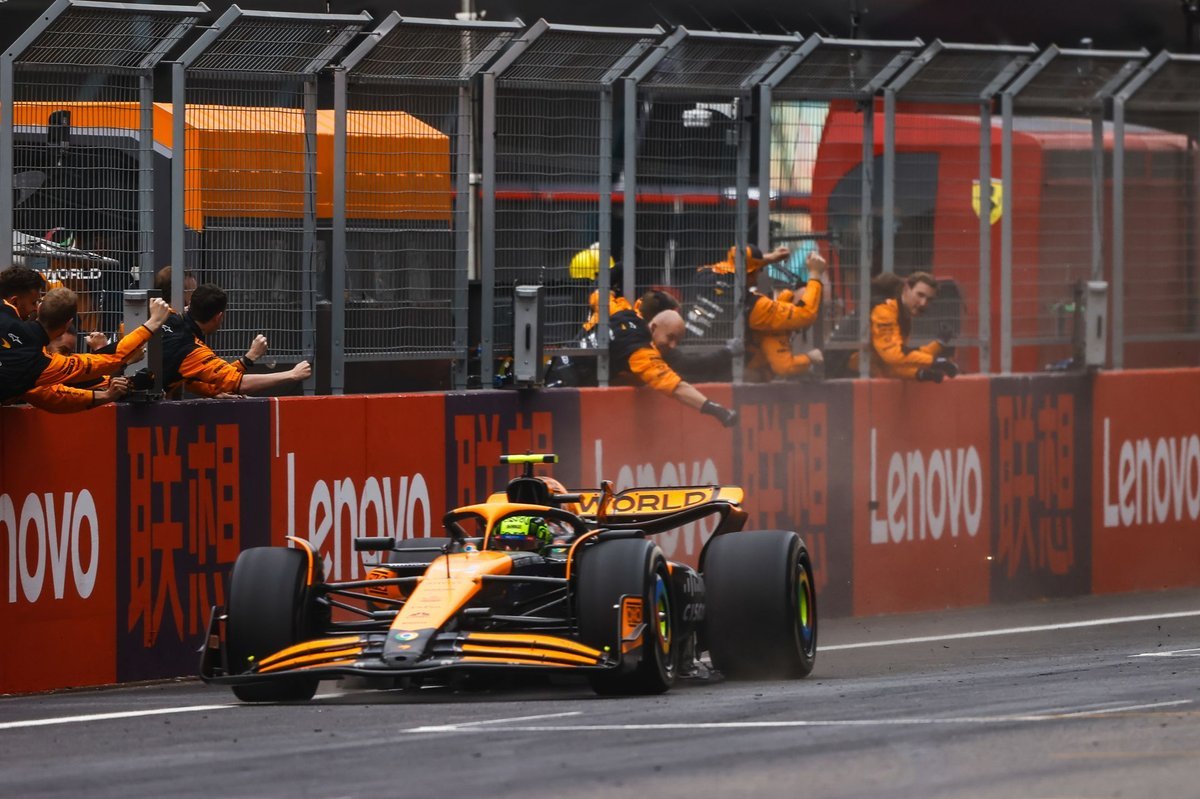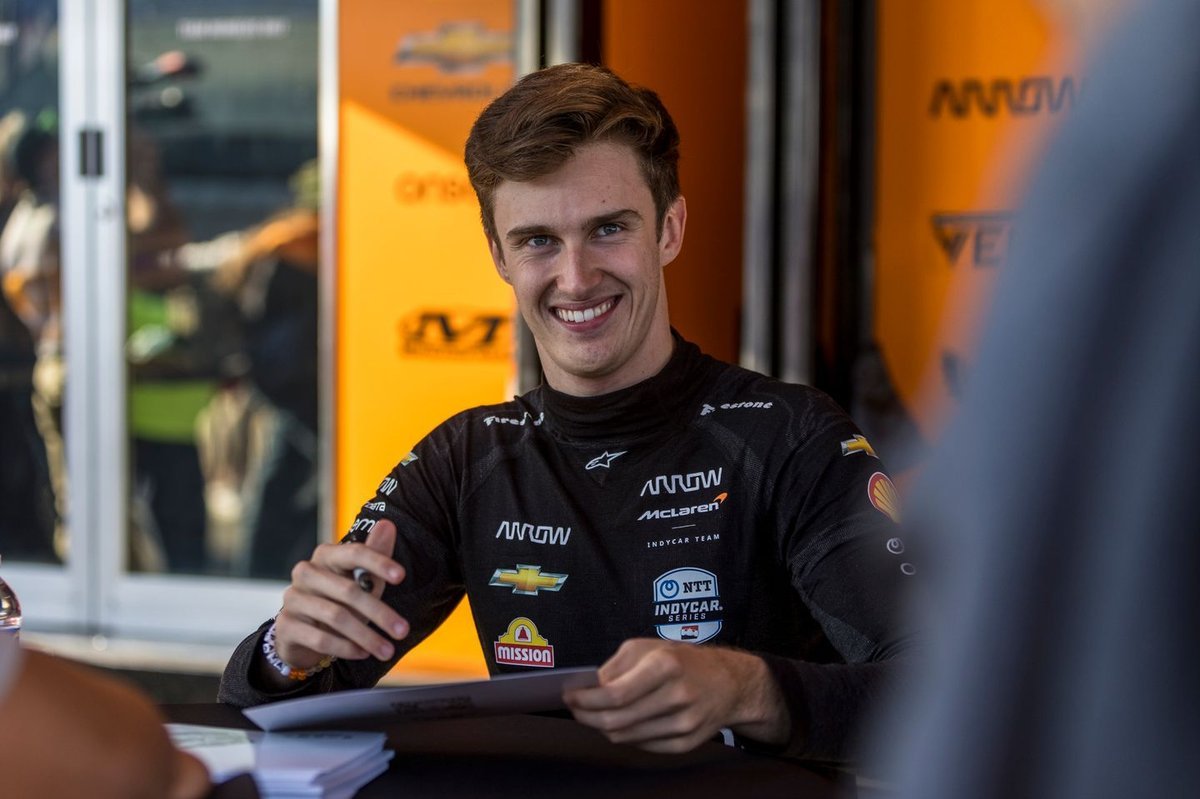In Formula One history, only a small number of drivers have ever received a race ban due to its extreme rarity and severity.
In the world of Formula 1, collecting penalty points is every driver’s nightmare. But hitting the dreaded 12-point threshold leads to an even bigger consequence—a race ban. Recently, Kevin Magnussen became the latest addition to this unfortunate club, joining a select list of drivers who’ve been temporarily sidelined from the sport. Here’s a breakdown of Magnussen’s 2024 ban and the notorious company he now keeps.
Kevin Magnussen – 2024
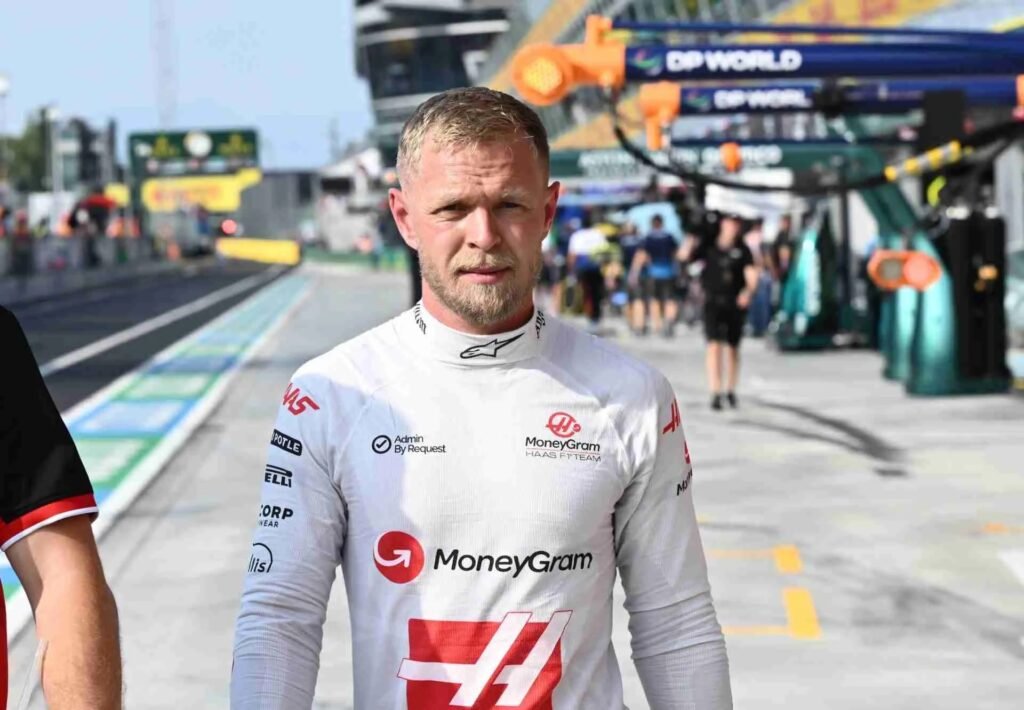
Source – Total Motorsport
Haas’ Kevin Magnussen found himself at the sharp end of the FIA’s penalty point system this season. His fate was sealed after an incident at the Italian Grand Prix, where a botched overtake on Pierre Gasly resulted in contact, earning him a 10-second penalty and two crucial penalty points. This brought his tally to the maximum 12 points, forcing him to sit out the Azerbaijan Grand Prix.
Magnussen didn’t mince his words following the decision, labeling the ban as nonsensical. “It makes zero sense,” the Danish driver argued, pointing out that neither car was damaged in the clash. But there was no escape—the points accumulated over a string of earlier incidents. Here’s how it happened:
- Saudi Arabia: Collision with Alex Albon (three points)
- China: Collision with Yuki Tsunoda (two points)
- Miami Sprint: Exceeding track limits while battling Lewis Hamilton (three points)
- Miami Grand Prix: Collision with Logan Sargeant (two points)
Despite his protests, the ban was enforced, placing Magnussen in a rather exclusive—and unfortunate—club of drivers who have been barred from racing. One of his most notable companions in this club? None other than his former teammate, Romain Grosjean.
Romain Grosjean – 2012
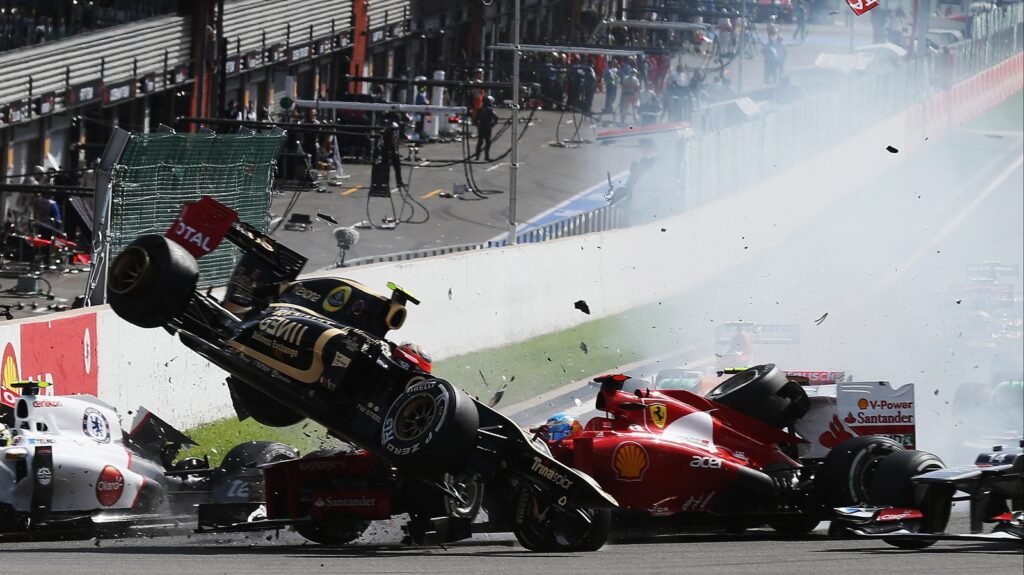
Source ETR
Magnussen joins an infamous group of banned drivers that also includes his former Haas teammate, Romain Grosjean. Grosjean’s ban came during the 2012 season while racing for Lotus, after a dramatic opening lap incident at the Belgian Grand Prix. Grosjean moved across the track and collided with Lewis Hamilton’s McLaren, a crash that escalated into chaos and collected several other cars, including Fernando Alonso’s Ferrari and the Saubers of Sergio Perez and Kamui Kobayashi.
Grosjean’s airborne Lotus was enough to trigger an immediate race investigation, with the FIA deeming him solely responsible for the incident. His actions not only caused a multi-car pileup but also eliminated several key championship contenders. For what the stewards described as an “extremely serious breach of the regulations,” Grosjean was banned from the next race, the Italian Grand Prix, and replaced by reserve driver Jerome d’Ambrosio.
Jacques Villeneuve – 1997
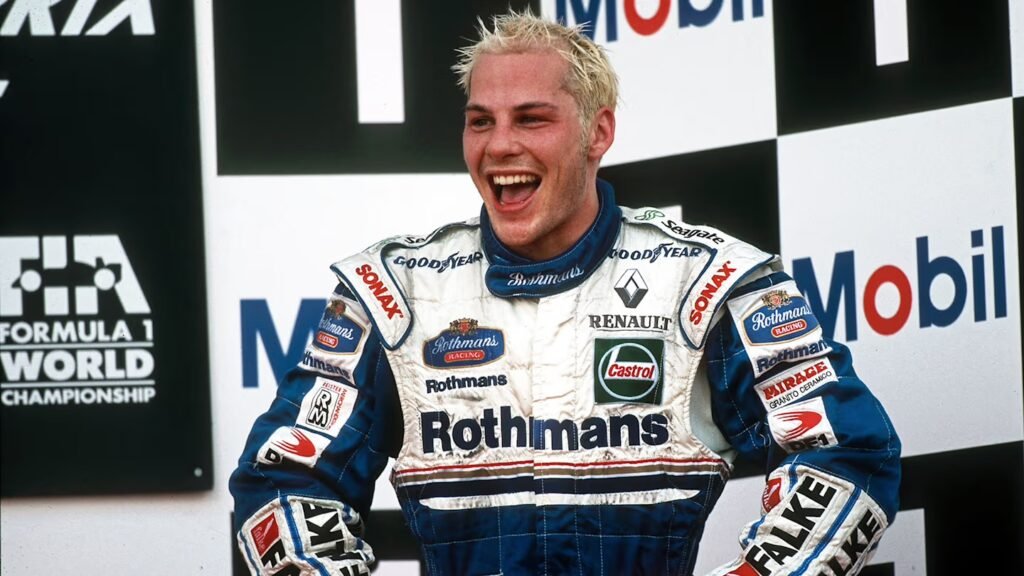
Source – Formula1.com
Even world champions are not immune from race bans, as Jacques Villeneuve found out during his 1997 title-winning campaign. Heading into the Japanese Grand Prix, Villeneuve was poised to seal the championship, needing only to take a point off his rival Michael Schumacher. However, during a practice session, Villeneuve failed to slow down under yellow flags following an incident involving Jos Verstappen’s stranded car. While several drivers ignored the flags, including Schumacher, Villeneuve’s past infractions made his situation more dire.
Having already committed the same offense on three previous occasions, Villeneuve’s ban was immediately enforced. However, his Williams team lodged an appeal, allowing him to race in Suzuka. He finished fifth, but the FIA upheld the ban after the race, stripping him of the points he earned that day. Ultimately, Villeneuve clinched the championship in the following race, but the ban was a stark reminder of the consequences even champions can face.
Michael Schumacher – 1994
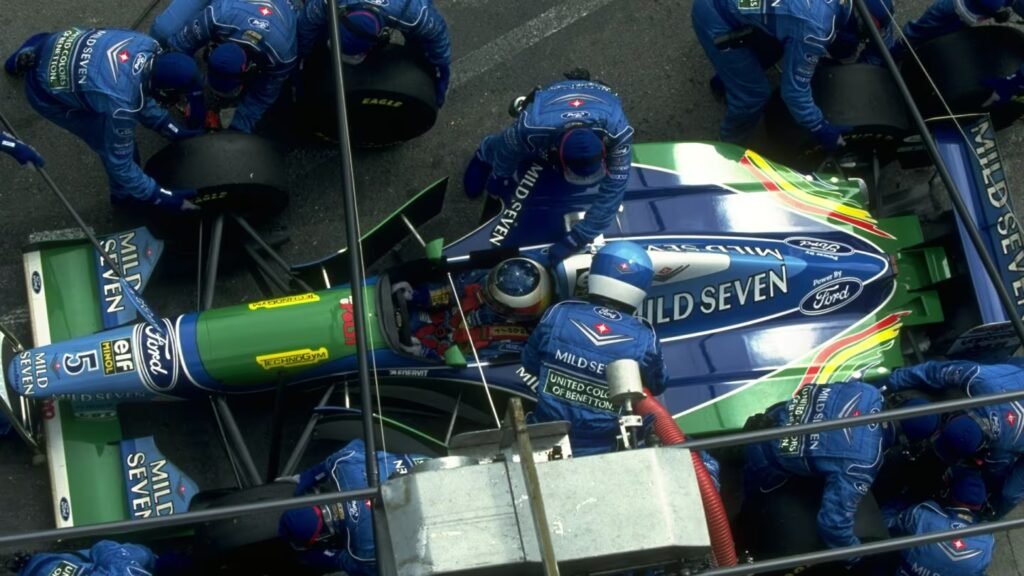
Source – Formula1.com
No discussion of race bans would be complete without mentioning Michael Schumacher, one of the greatest drivers in Formula 1 history. In 1994, Schumacher was in the thick of a title fight with Damon Hill when he made a critical error during the British Grand Prix. Overtaking Hill on the formation lap, Schumacher was handed a five-second stop-go penalty. However, instead of serving it, Benetton advised him to stay out while they appealed the decision. This led to Schumacher receiving the black flag for ignoring the penalty.
Despite further negotiations between the team and the FIA, Schumacher was eventually disqualified from the race and handed a two-race ban. Benetton’s appeal delayed the enforcement of the penalty, but Schumacher ultimately missed the Italian and Portuguese Grands Prix. His absence opened the door for Hill to close the gap in the championship standings, setting the stage for one of the most dramatic title deciders in F1 history.
Mika Hakkinen – 1994
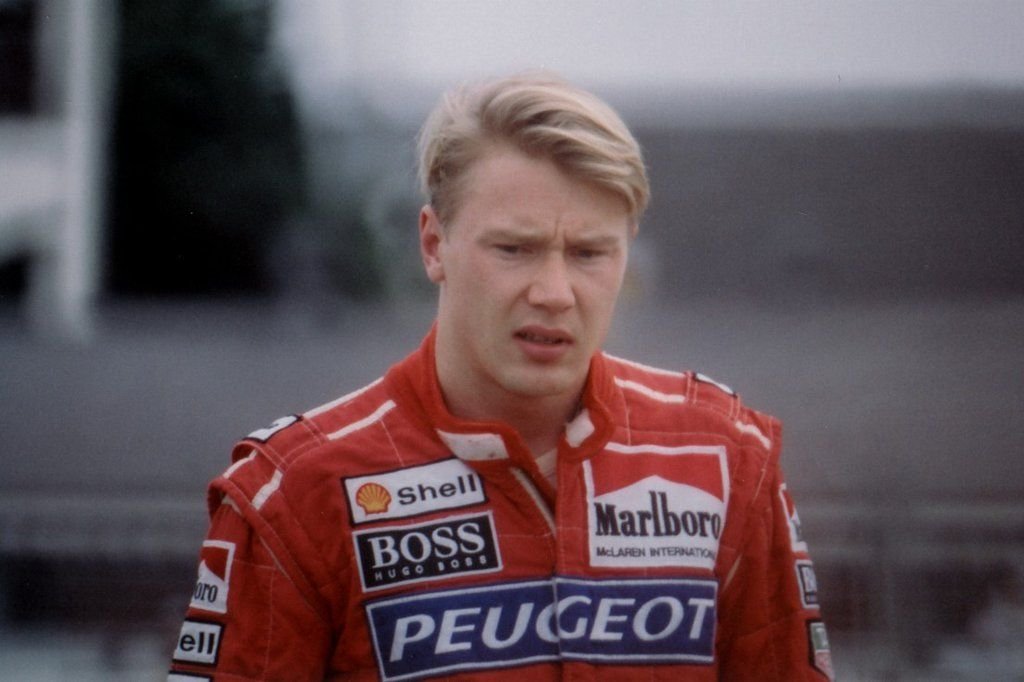
Source – pinterest
Before Mika Hakkinen became a double world champion, he too faced the wrath of the FIA. In 1994, Hakkinen’s aggressive driving style earned him a suspended race ban after a collision with Rubens Barrichello at the British Grand Prix. The penalty was later enforced at the German Grand Prix following another incident, this time with David Coulthard.
At Hockenheim, Hakkinen’s audacious move on Coulthard resulted in a multi-car crash, sidelining several competitors. The Finn’s mistake not only ended his race but also triggered his enforced ban, leaving him to sit out the next race and adding to what had already been a challenging season filled with retirements.
Eddie Irvine – 1994
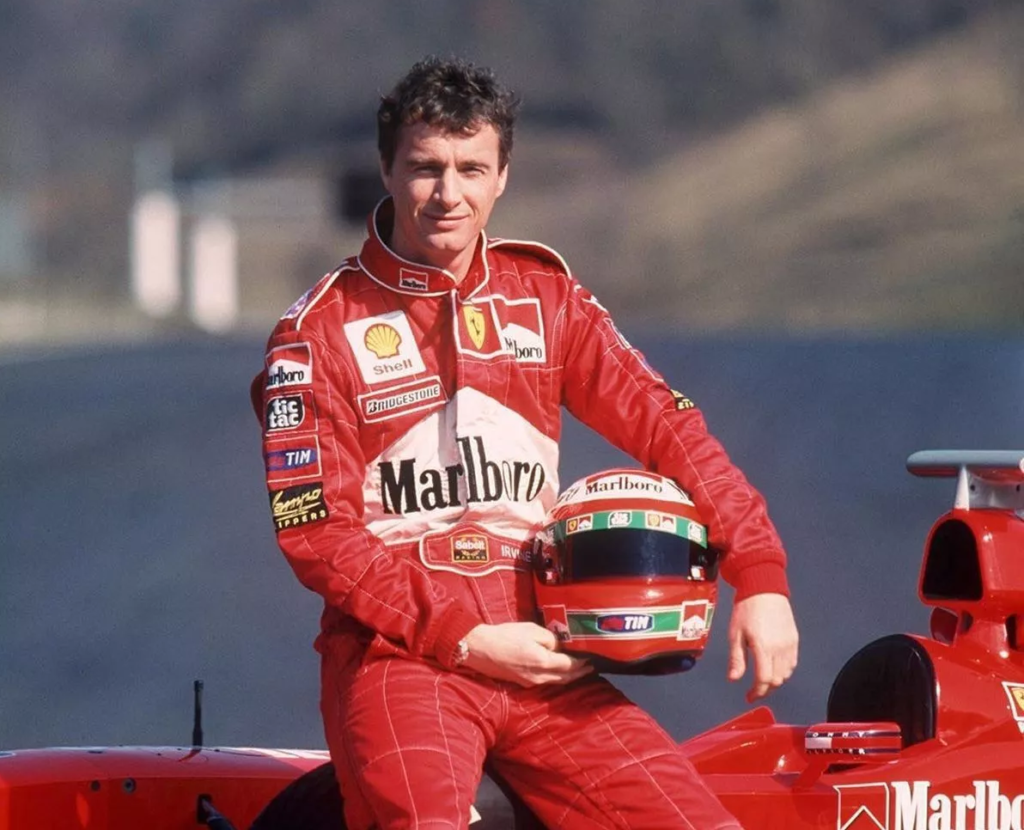
Source Irish Mirror
Eddie Irvine’s race ban in 1994 was one of the most severe of the modern era, sidelining the Jordan driver for three races. The punishment stemmed from a four-car crash at the Brazilian Grand Prix, where Irvine’s move on Jos Verstappen led to a massive incident that saw Verstappen’s car go airborne. While no drivers were injured, the crash was enough for the FIA to hand Irvine a one-race ban.
However, Jordan decided to appeal the decision, a move that would backfire spectacularly. Instead of overturning the penalty, the FIA increased the ban to three races, a harsh reminder of the consequences of aggressive driving and the risks of challenging race officials.
Nigel Mansell – 1989
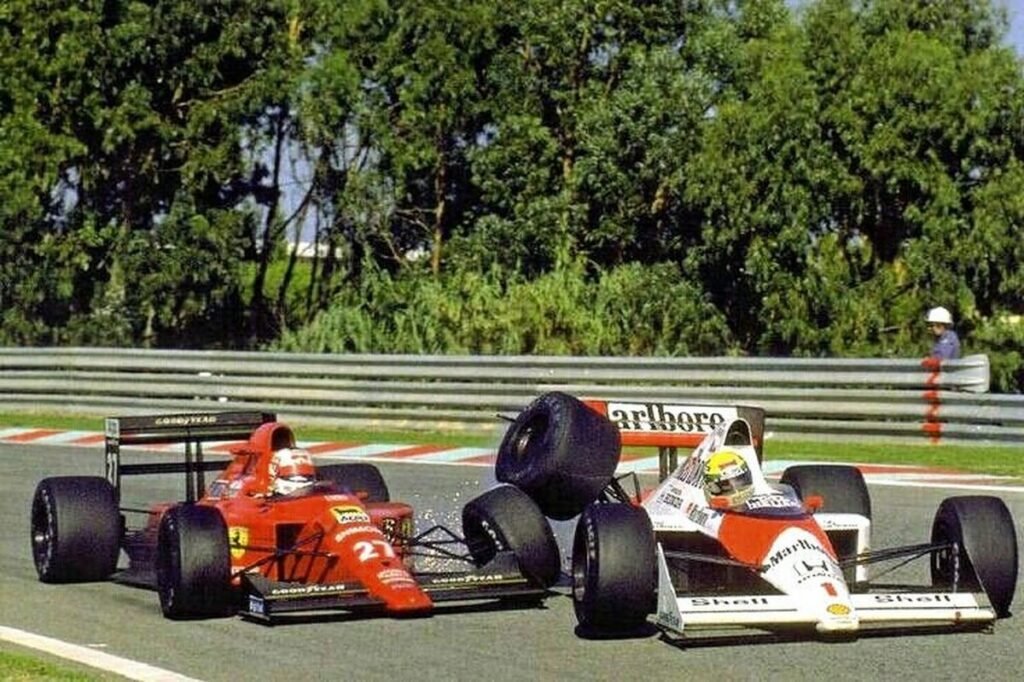
Source – F1i.com
Nigel Mansell, Ferrari’s “Il Leone,” saw his season take a sharp downturn at the 1989 Portuguese Grand Prix. After leading the race comfortably, Mansell’s pit stop was marred by a mistake—he overshot his pit box and reversed his car back into position, a forbidden maneuver. For this, the FIA showed him the black flag, but Mansell chose to ignore it and continued racing.
His pursuit of Ayrton Senna led to a collision, taking both out of the race and resulting in Mansell receiving a $50,000 fine and a one-race ban. He missed the next race in Spain, marking a low point in what had otherwise been a competitive season for Ferrari.
Riccardo Patrese – 1978
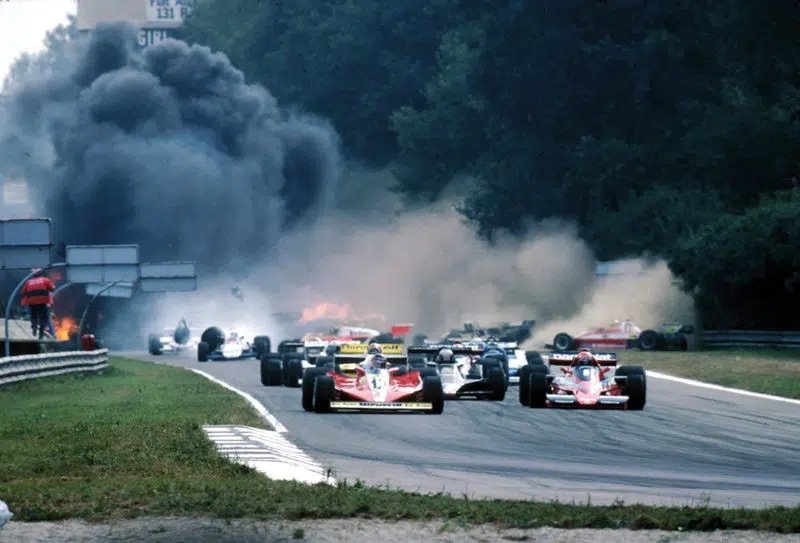
Source – Motor Sport Magzine
Riccardo Patrese’s reputation as an aggressive driver peaked at the 1978 Italian Grand Prix, where his attempt to overtake James Hunt led to a tragic multi-car crash that saw Ronnie Peterson’s car catch fire. Peterson, who suffered leg injuries in the accident, tragically passed away the following day due to complications.
The incident was so severe that a group of F1 drivers, including Hunt and Niki Lauda, pushed for Patrese to be banned from the upcoming United States Grand Prix. The FIA agreed, sidelining the 24-year-old, though he maintained his innocence throughout the ordeal.
Kevin Magnussen now finds himself among a notorious group of drivers who have faced race bans in Formula 1. His absence from the Azerbaijan Grand Prix will undoubtedly hurt Haas’s campaign, but it also serves as a stark reminder that even the most experienced drivers can fall afoul of the sport’s stringent regulations. Whether or not Magnussen feels his punishment is justified, the history of F1 shows that the consequences of aggressive or reckless driving are always taken seriously, regardless of the driver’s status or past accomplishments.

